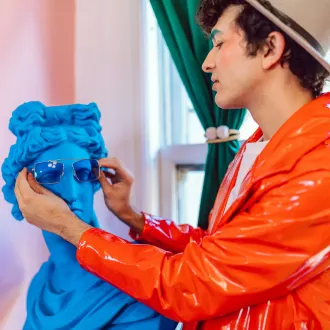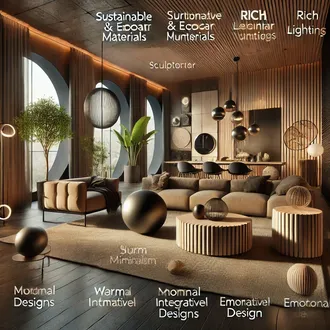Transcription Modifying the perception of spaces
The dimensions and shape of the room have a considerable influence on its use and are largely determined by the structural characteristics of the building; however, through the intentional use of color, light and texture within the room, the perception of size, scale and distance can be modified in such a way that the space can be perfectly adapted to the planned purpose.
How to combine colors to make the best use of the interior space? In order for colors to favorably influence the perception of the dimensions and shape of interior spaces, the decorator must learn to manage colors in three categories: warm colors, cool colors and neutral colors.
- Warm colors are: reds, oranges and yellows.
- The cold colors are: blues, greens and violets.
- Neutral colors are generally those of low intensity and saturation. For example: white, black, gray, beige and brown or earth tones.
Through the proper management of the three previous categories and the intensity and saturation of colors, the decorator can achieve, among other things: modify the perception of the dimensions and shape of a space; focus attention on an object or an area of the room; provide warmth or coldness; and make the interior spaces more cheerful or somber.
How to modify the perception of the dimensions and shape of the space through the use of color?
- When the space is too small, in order to extend its apparent dimensions (width, length and height), light colors with cold tones (blues, greens) or grayish tones should be used; these colors are perceived further away, so the room apparently increases in size.
- When the space is too large, to create the illusion of a smaller room, dark and saturated warm tones should be used, these colors are perceived closer, making the room seem smaller.
How to focus attention on an object or an area of space using color combinations?
- It is possible to focus the attention on a wall or any area of the space, using colors of warm tones and strong intensities since these are usually more attractive and stimulating. If, on the contrary, you want to reduce the attention on an area, you should use cold and not very intense shades.
- It is possible to focus attention on an object if its color contrasts intensely with the background and with the rest of the surrounding objects.
General recommendations for the use of colors in an interior space In general, the combination of colors in an interior space should follow the following guidelines:
- In the extensive surfaces of a room (walls, ceiling and floor) rather neutral shades should be used.
- In the surfaces of medium extension, large carpets, bulky pieces of furniture, etc., should be used shades of greater intensity.
- In the rest of the medium and small surfaces, different tones should be used to achieve balance and highlight the main element.
How can light be used to modify the perception of the interior space?
With the intentional use of light, the decorator can achieve the following effects in the interior space:
- The handling of light and shadows give volume to the furniture, which accentuates the distances between the different planes, giving depth to the space.
- The incidence of natural light in the interior spaces in different ways throughout the day, and through the different seasons of the year, constantly transform the perception of the interior space, modifying its colors, the projections of shadows and the limits of objects and spaces.
- By directing artificial light we can highlight an object or modify its perception, making a figure provoke different sensations when we observe it from different places. Page breaks.
The use of texture to accentuate the character of interior spaces. The use of texture in furniture, walls and accessories in a room should be in correspondence with the dimensions of the room, the main surfaces and other secondary elements that make up the interior space.
Because texture promotes the visual perception of a fuller space, in very small rooms it is recommended to use it sparingly or to use softer textures; while in large rooms, texture can be used as an effective tool to reduce the perception of space or to frame different areas within a room.
space relations




